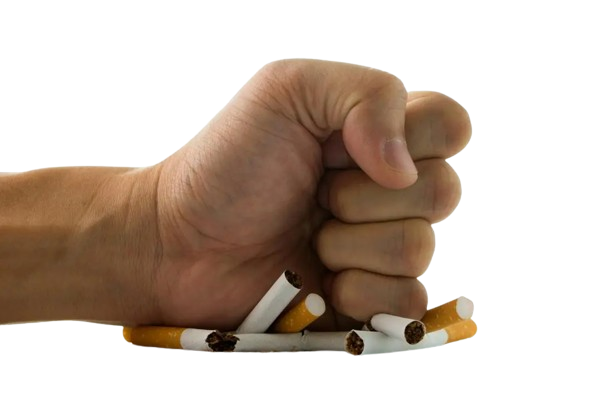Tobacco and Pan cessation Expert in Perumbakkam
Your Trusted Partner in Tobacco and Pan cessation
“The greatest courage is not found in the bottle; it’s the strength to pour it out and start a new chapter of life.” We are here to provide you with top-notch care and guidance to tackle your problems.

Understanding Tobacco/ Pan cessation
Understand Nicotine Withdrawal
After you quit, you may feel uncomfortable and crave a chew or dip. This is withdrawal. Your body is getting used to not having nicotine. During withdrawal, you may:
- Feel a little depressed.
- Be unable to sleep.
- Become cranky, frustrated, or mad.
- Feel anxious, nervous, or restless.
- Have trouble thinking clearly.
The timeline for withdrawal symptoms can vary, but for most people, the worst symptoms last a few days to a few weeks. You may be tempted to chew or dip when these feelings hit. Remember that they are temporary, no matter how powerful they feel at the time.
Chewing tobacco and cancer risk
Betel quid, paan or gutkha is a mixture of ingredients, including betel nut (also called areca nut), herbs, spices and often tobacco, wrapped in a betel leaf.
Chewing smokeless tobacco, such as paan or gutkha, is popular with many people from south Asian communities, but all forms of tobacco can harm your health.
Research has shown that using smokeless tobacco raises the risk of mouth cancer and Oesophageal(food pipe)cancer
Studies have also found that betel itself can raise the risk of cancer, so chewing betel quid without tobacco is still harmful.
Cigarettes, bidi and shisha
Smoking increases your risk of cancer, heart disease and respiratory problems.
This is true whether you smoke cigarettes, bidi (thin cigarettes of tobacco wrapped in brown tendu leaf) or shisha (also known as a waterpipe or hookah).
Like cigarette smoke, waterpipe smoke contains significant levels of cancer-causing chemicals and toxic gases such as carbon monoxide.
Quit smoking and tobacco
The most effective way to quit smoking and tobacco use is with expert help from a stop smoking adviser.
Your free local NHS stop smoking service can provide medication and expert support to help you quit.
Many services also offer support to help you stop using smokeless tobacco, such as paan.
You can find out more about quitting smoking on the better Health Website, or call the Smokefree National Helpline for free on 0300 123 1044 (England only).
The helpline is open 9am to 8pm Monday to Friday, and 11am to 4pm on Saturday and Sunday.
Learn How to Handle Triggers and Cravings
Triggers are specific people, places, or activities that make you want to chew or dip. Knowing your triggers can help you find ways to deal with them. Different people have different triggers. Some common ones are:
- Waking up during the night or having nightmares
- After meals or during breaks
- Driving
- Stress or pain
- Feeling anxious, angry, impatient, or bored
- Seeing someone else smoke, chew, or dip
- Drinking coffee or alcohol
- After sex
- Before bedtime
- Watching TV or a live game
- Playing a sport
Triggers can cause cravings. Cravings are short but intense urges to chew or dip. All cravings are temporary and will pass with time. Learn about more and get ideas for dealing with cravings.
Use Nicotine Replacement Therapy
One way to deal with nicotine withdrawal is to try nicotine replacement therapy (NRT) like nicotine gum and patches. NRT can reduce withdrawal symptoms and double your chances of quitting smokeless tobacco for good. Explore the different types of NRT that can help you quit smokeless tobacco.
NRT comes in several different forms, including patch, gum, and lozenge. The nicotine patch is a long-acting form of NRT that releases a small, steady amount of nicotine through the skin. This small amount of nicotine helps satisfy your craving for nicotine. But you may still have cravings while on the patch. Doctors recommend using the patch along with a short-acting form of NRT, like nicotine gum or lozenges. This will help you fight these strong cravings for dip or chew. That’s because using the patch with either the gum or lozenge will work better than using any of these on their own. If you have a severe medical condition or are pregnant, talk to your doctor about using NRT.
A lot of research has been done on NRT. It has been shown to be safe and effective for almost all adult tobacco users who want to quit. NRT is available from your VA provider at a low cost or at your neighborhood drugstore without a prescription. If you plan to use NRT, have it available on your quit day.
NRT will give you the most benefit if you use it as recommended. Visit our NRT page to learn more about the different types of NRT, proper dosing, and how to combine methods for the best chance of quitting.
Frequently Asked Question on Tobacco/ Pan cessation
Pan is a traditional chewing mixture that often includes betel leaf, areca nut, slaked lime, catechu, and, in many cases, tobacco. Chewing pan with tobacco increases the risk of oral cancer, gum disease, and other health problems.
Cessation is crucial because tobacco and pan use are major risk factors for various diseases, including cancer, respiratory disorders, and cardiovascular diseases. Quitting reduces the risk of these health issues and improves overall well-being.
Yes, healthcare professionals, including doctors, counselors, and smoking cessation specialists, can provide guidance and support. Many countries also have quitlines and online resources.
Preventing relapse involves ongoing support, identifying and managing triggers, adopting healthy coping mechanisms, and staying committed to a tobacco-free lifestyle.
Long-term benefits include a reduced risk of cancer, improved cardiovascular health, decreased respiratory issues, and an overall improvement in quality of life.
Yes, exposure to secondhand smoke or pan residue can influence cessation efforts. Creating a smoke–free environment and seeking support from family and friends are crucial.
